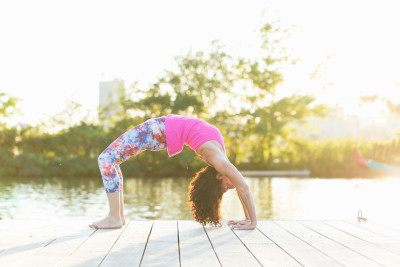
As a teacher focusing primarily on anatomy, I like to challenge myself to find ways to present this complicated topic in easy-to-follow ways so people can learn how to integrate anatomy into not only their yoga practice but all that they do. That might seem like a no-brainer, I mean, we’re a walking anatomy lesson, right? What do we need to intentionally do differently in order to move “smarter,” as I like to say? Well, there are lots of ways we can move smarter but it really depends on a good, solid understanding of the fundamentals of anatomy.
So, with all of that in mind, I have been recently fascinated with the idea of shavasana and what happens when students take that last pose at the end of class. You might think this is a bit of a disconnect because how can laying on the floor after yoga class be a study in anatomy? But this is exactly why I’ve recently been challenging myself to think a bit more deeply about this last posture.
First of all, there’s the obvious. Shavasana is a time to rest. On the surface and keeping in mind some basics of anatomy and physiology, in this last pose we give all our vital signs a chance to return to baseline. Things like our heart rate, pulse and respiration are all given an opportunity to return to their normal rhythms. This is why I get so concerned when students rush out of class and skip Shavasana. Think of the same action after a run. Would you run five miles and then simply jump in your car and go on with your day? Of course not! You’d stop running, walk a bit, maybe take a few stretches and carry on. For whatever reason, many people don’t think of yoga in the same way, requiring the same “cool down” period that any other type of exercise would require.
Next, Shavasana is a time for your body to integrate what you’ve done. Your muscles start to recover from the movements you’ve taken and for some people, many of these movements might be new. Think of a backbend, Wheel Pose, for instance. For many of us, we rarely move our spine in that direction (extension) and even more rare is taking the head back as far as would occur in Wheel Pose:

However, with proper warm up, the right poses to prep the body and good instruction, we can take on this pose. It can quite a different way to use our muscles, nervous system and joint systems and so once done, it’s helpful to rest and let the impact of those actions act on the body. One of my biggest pet peeves are the students who run out of class after Wheel Pose. To use that running analogy, it’d be like going out for a run, stopping midway and quickly switching to another task while all your body systems are elevated (heart rate, pulse, respirations).
Finally, and almost most importantly, Shavasana is a time for us to enjoy silence. Silence! A time to be away from our phones, away from sounds and most importantly away from technology. It’s a time when we can close our eyes and just let our mind wander. The next time you step on that yoga mat, think about how you’ll spend Shavasana before you even start. Have something nearby that you can use to cover your eyes. Maybe take a blanket that you can roll up and place under your knees. Maybe take a spot near a wall so you can to Legs Up the Wall Pose. When you arrive at Shavasana, close your eyes, cover your eyes and allow your arms and legs to fully relax into the floor. Let your mind wander and do whatever it wants. Surrender to the idea of being in a place where you can fully let go, trusting that the teacher will gently remind you when it’s time to go.
We need these moments more than ever now, in our super-charged, busy, highly interactive lives. Don’t miss out on this chance every time you practice to restore your body and mind.
If you’re interested in learning more about the anatomy of yoga, I’ve just started posting classes online on Vimeo. For only $10, you can download a 50 minute practice loaded with anatomical cues and information. To get the class, click here.
Thanks so much for reading!
